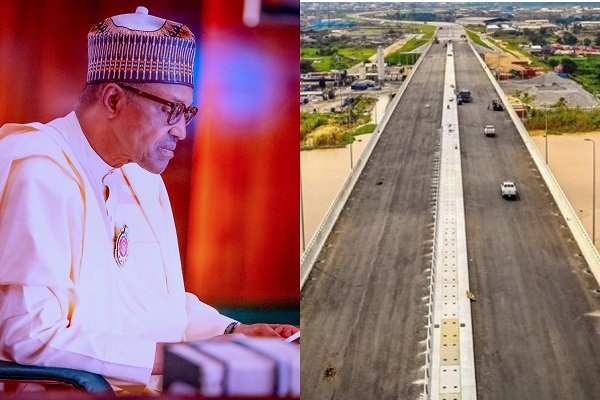Travellers to Enugu, Owerri, Aba and other parts of the South East from Asaba, Delta State, will experience some traffic relief from today as President Muhammadu Buhari commissions the Second Niger Bridge and its access roads.
After almost five decades of failed promises by successive administrations, Buhari has completed the 11.5-kilometre bridge in Onitsha, across the River Niger, connecting Asaba with Ogbaru, in Anambra State, and beyond.
The newly constructed access roads at Oko to the 1.63-kilometre bridge and the Onitsha/Obosi interchange make it about 12 kilometres long.
The major phase of the project, which is the bridge itself, was completed late last year and temporarily opened to the public during the Christmas holidays.
Contracts for access roads from the Asaba Airport and Obosi to Onitsha-Enugu, as well as Onitsha-Owerri expressway, were awarded to the same contractor handling the bridge, Julius Berger Plc.
The First Niger Bridge was constructed over 60 years ago, and has become too narrow for the volume of traffic from Asaba to Onitsha and vice versa.
Built-in 1965, it had remained the major link between the South West, South East and South South over the years. But excessive axle load and traffic congestion, due to growing economic/commercial activities on that transport corridor, has made construction of the Second Niger Bridge imperative.
The ground-breaking ceremony was performed on March 10, 2014, by then President Goodluck Jonathan, signaling commencement of construction, essentially to reduce the strain on the existing bridge, improve traffic flow, the health and security of travellers, as well as create opportunities for host communities and other Nigerians to improve their socio-economic activities.
Jonathan promised to complete the bridge on schedule and according to specifications within 48 months, saying it was critical to his administration’s resolve to improve the economic fortunes of the country.
The bridge is part of the 11.9-kilometre project, located 1.7 kilometres downstream of the first bridge on a new alignment, consisting of two end spans of 40.25 metres and 40 metres, respectively, 16 equal intermediate spans of five metres each and two intermediate span of 90 metres each, as well as three navigational spans of 150 metres each.
The total width of the dual carriage bridge is 30.1 metres, comprising 12.25 metres wide three-lane carriage, with 0.9-metre shoulder in each direction and 3.6 metres central reserve.


